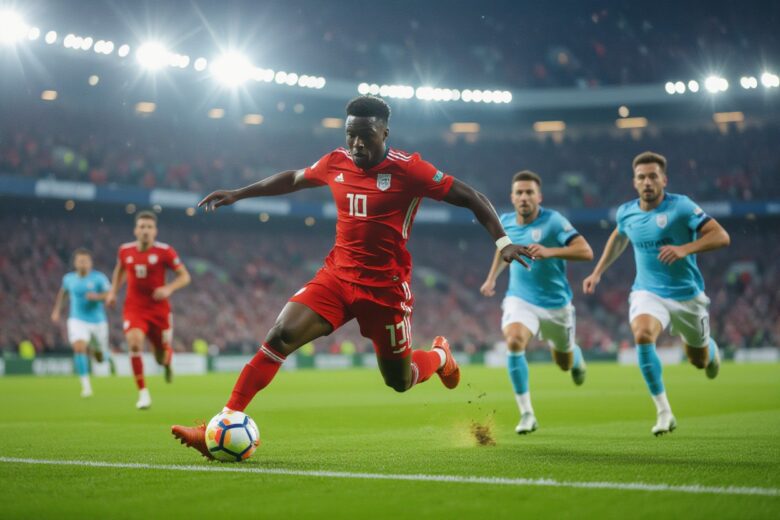Full-backs have evolved from simple defensive positions into dynamic playmakers who can transform your team’s attacking potential. You’ll notice how modern football demands these players to be complete athletes, combining defensive duties with the ability to create scoring opportunities. When you watch top-tier matches today, you’ll see full-backs regularly contributing to attacks, delivering pinpoint crosses, and even scoring goals. Their unique position allows you to stretch the opposition’s defense and create numerical advantages in attacking scenarios, making them invaluable assets in contemporary tactical setups.
The Evolution of the Full-Back Role
Historical Context: From Defenders to Dual Threats
Full-backs of the 1960s and 70s primarily focused on defensive duties, rarely venturing beyond the halfway line. The transformation began with pioneering players like Carlos Alberto and Paul Breitner, who demonstrated that defenders could contribute to attacks without compromising defensive stability. By the 1990s, full-backs had evolved into dynamic players capable of influencing both ends of the pitch, setting the foundation for modern attacking defenders.
Tactical Shifts: How The Game’s Philosophy Changed
Modern football’s emphasis on possession and high pressing has revolutionized the full-back position. Teams now utilize these players as primary creators, often touching the ball more than midfielders. The shift from traditional 4-4-2 formations to more fluid systems has given full-backs greater freedom to exploit wide areas, creating numerical advantages in attack while maintaining defensive responsibilities.
This tactical evolution demands full-backs possess exceptional technical skills and stamina. Players like Trent Alexander-Arnold and Andy Robertson exemplify this transformation, regularly contributing 10+ assists per season while maintaining defensive solidity. Their heat maps show significant activity in the opponent’s half, often operating as auxiliary wingers. You’ll notice these modern full-backs frequently position themselves alongside midfielders rather than traditional defensive lines, fundamentally changing how teams build attacks.
The Art of Overlapping: Creating Space and Opportunities
Overlapping runs transform defensive positions into attacking threats, creating numerical advantages and stretching opposition defenses. Modern full-backs exploit these forward movements to overload flanks and generate crossing opportunities. The technique requires precise positioning, acceleration, and spatial awareness to maximize attacking potential while maintaining defensive stability.
Timing the Run: When to Push Forward
Your overlapping movement should coincide with your winger’s inward drift, creating a split-second window of defensive uncertainty. Watch for triggers like your teammate receiving the ball with their back to goal or the opposition fullback stepping inside. The perfect timing allows you to arrive at full speed just as the ball is played into space, catching defenders flat-footed and opening channels for crosses or cutbacks.
Synergy with Wingers: Creating Dynamic Partnerships
Building an understanding with your winger unlocks devastating attacking combinations. When they cut inside, you provide width; when they stay wide, you can underlap through the half-space. This fluid movement creates confusion for defenders who must choose between tracking the winger’s diagonal runs or blocking your overlapping surge.
The partnership between Andy Robertson and Sadio Mané at Liverpool exemplifies this dynamic – Robertson’s overlapping runs created 12 assists in the 2019/20 season alone. Your positioning should mirror your winger’s movement, maintaining optimal distances of 10-15 yards to enable quick combinations. Reading your partner’s body orientation and first touch gives you precious seconds to time your run and exploit defensive gaps.
Data-Driven Defense: Metrics that Matter
Analyzing Contributions: Assists, Key Passes, and Chances Created
Modern football analytics track full-backs’ attacking contributions through expected assists (xA), progressive carries, and successful crosses per 90 minutes. You’ll find these metrics revealing the true offensive impact beyond basic assist numbers. The data shows top full-backs averaging 1.2-2.0 key passes per game and maintaining 30%+ crossing accuracy while covering over 10km per match.
Case Studies of Successful Attacking Full-Backs: What the Numbers Reveal
Statistical analysis of elite full-backs demonstrates their evolving role in modern football’s attacking phases. By examining their heat maps and touch data, you’ll notice how these players spend nearly 40% of their time in the opposition half, fundamentally changing how teams build attacks and maintain possession.
- Trent Alexander-Arnold (Liverpool): 12 assists, 2.8 key passes per game, 78 chances created in 2021/22
- João Cancelo (Manchester City): 7 assists, 2.1 key passes per game, 87% pass completion rate
- Achraf Hakimi (PSG): 8 assists, 1.9 key passes per game, 42 successful dribbles
- Theo Hernández (AC Milan): 6 assists, 1.7 key passes per game, 62 progressive carries per match
- Reece James (Chelsea): 9 assists, 2.3 key passes per game, 71% crossing accuracy
Countering the Opposition: Defensive Responsibilities and Balance
Transitioning Between Attack and Defense: The Critical Mindset
Your positioning as a full-back requires constant mental adjustment between offensive and defensive phases. Reading the game flow allows you to anticipate transitions before they happen, giving you precious seconds to react. Top full-backs like Liverpool’s Andrew Robertson demonstrate this by immediately dropping into defensive positions when possession is lost, while maintaining the ability to spring forward when opportunities arise.
Recognizing and Exploiting Opponent Weaknesses
Studying your direct opponent’s tendencies reveals exploitable patterns in their game. You’ll notice when wingers tend to cut inside or stay wide, their preferred foot, and their tracking back habits. These insights create opportunities for well-timed overlapping runs and defensive positioning that neutralizes their strengths.
Modern analysis tools help you identify specific weaknesses in opposition players. For example, if data shows a winger’s defensive work rate drops after the 60-minute mark, you can increase your attacking frequency during this period. Similarly, recognizing when opponents struggle with quick switches of play allows you to position yourself for these opportunities. Manchester City’s Kyle Walker exemplifies this approach, consistently exploiting spaces left by tired wingers in the latter stages of matches.
Future Trends: The Next Generation of Full-Backs
Emerging Talents and Tactical Innovations
Young talents like Alphonso Davies and Nuno Mendes are redefining the full-back position with their hybrid skill sets combining defensive stability with attacking flair. Modern tactical setups now frequently position full-backs as inverted midfielders or wide playmakers, creating numerical advantages in central areas. You’ll notice teams adapting their formations to accommodate these versatile players, with some managers even deploying their full-backs as primary creative outlets rather than traditional wingers.
The Influence of Technology and Training on Skill Development
Advanced GPS tracking and performance analytics have revolutionized how full-backs train and develop. Modern players now use AI-powered training systems to perfect their crossing accuracy and timing of forward runs. Virtual reality simulations help full-backs improve their decision-making in high-pressure situations, while biomechanical analysis optimizes their movement patterns for both defensive and attacking phases.
Your full-backs can now benefit from personalized training programs that target specific aspects of their game. Data-driven insights highlight areas for improvement, from sprint recovery times to crossing accuracy under fatigue. Wearable technology monitors physical load during matches and training, allowing coaches to fine-tune workout intensities and prevent injuries. This tech-enhanced approach has produced a new breed of full-back who combines athletic excellence with tactical sophistication.
Summing up
Summing up, as you explore the evolution of attacking full-backs, you’ll notice how these defenders have transformed modern football. Your understanding of their role goes beyond simple defensive duties – they’re now key playmakers, providing width, creating chances, and contributing to goals. When you watch top-level matches, you’ll see how full-backs influence both defensive stability and attacking prowess. By recognizing their tactical importance, you can better appreciate how these dynamic players shape the beautiful game, making them indispensable assets to any successful team.




